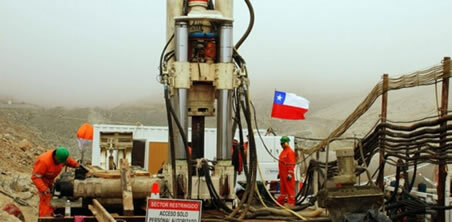With an area of 756,945 square kilometers, Chile is home to 16,970,265 inhabitants. According to data released in November 2010 by the United Nations (UN), this nation has the highest Human Development Index (HDI) in South America, with an average of 0.783. One of the main reasons for this fact is the country's economic strength, which has a very diversified economy.
Chile develops an economy with strong relations with foreign trade. Aiming to make more flexible and intensify imports and exports, the nation signed trade agreements to reduce customs tariffs with several blocs economic: Mercosur (Southern Common Market), CAN (Andean Community of Nations), EU (European Union), in addition to integrating APEC (Economic Cooperation of Asia and the Pacific).
In 2008, the Gross Domestic Product (GDP) of Chile, whose currency is the Chilean peso, reached the mark of 169.4 billion dollars. This indicator has been on the rise since the 1970s, when the country adopted the neoliberal model, opening up to international investments. During the 1990s, Chile averaged 7% growth per year; and from 2000 to 2009, this average was 5%, being one of the highest in South America. The country stands out in three sectors of the economy: agriculture, services and industry.
Agriculture corresponds to 5% of GDP and 10% of Chilean exports. This sector of the economy is based on the cultivation of wheat, grapes, oats, barley, corn, sunflowers, garlic, beetroot, etc. The country also has cattle, sheep, poultry and swine farms, in addition to fishing, which is an important source of income for part of the population.
Natural beauty, architecture, historical value, among other factors, drive tourism: approximately 2 million people visit Chile each year. The main destinations are the ski resorts, the Inca buildings in San Pedro de Atacama, the Valley of the Moon, Patagonia, Easter Island, Santiago, Valparaíso, among others.
Industry, on the other hand, responsible for about 50% of the national GDP, is concentrated near the capital, Santiago. The main segments are food, wine production, textiles, metallurgy, steel, mechanics, machinery, cement, wood and derivatives, mineral processing, etc.
Mining, in turn, is one of the main sources of financial revenue, as it drives both the industrial and service sectors. Chilean soil is extremely rich in mineral resources, especially copper reserves – the country is the largest producer and exporter in the world. Other important minerals are: coal, manganese, iron ore, molybdenum, zinc, lead and gold.

Machine used to rescue miners
However, Chilean mining was marked by a serious accident that occurred on August 5, 2010. The collapse of a copper mine in San José, northern Chile, left 33 workers trapped at a distance of nearly 700 meters from the surface. In an act of extreme bravery, considered a miracle by many, the miners resisted until they were rescued, on October 13th – 69 days after the accident. It was necessary to make a 66 cm diameter duct for the rescue to be performed. This accident caused a rise in copper prices, as Chile is responsible for producing 35% of the world's ore.
By Wagner de Cerqueira and Francisco
Graduated in Geography
Brazil School Team
Chile - countries - geography - Brazil School
Source: Brazil School - https://brasilescola.uol.com.br/geografia/economia-chile.htm
